Project Name
<fs large>Introaperative Fiducial Tracking in TORS</fs>
Summary
<fs larger>This project is intended to develop and implement an intraoperative fiducial tracking method, which is an important part of a TORS system. </fs>
You may want to include a picture or two here.
Background, Specific Aims, and Significance
Background
Specific Aims
<fs larger>• The goal of this project is to design and implement an intraoperative fiducial tracking method in TORS that could track the fiducial under the stereo endoscope without additional user input.
</fs>
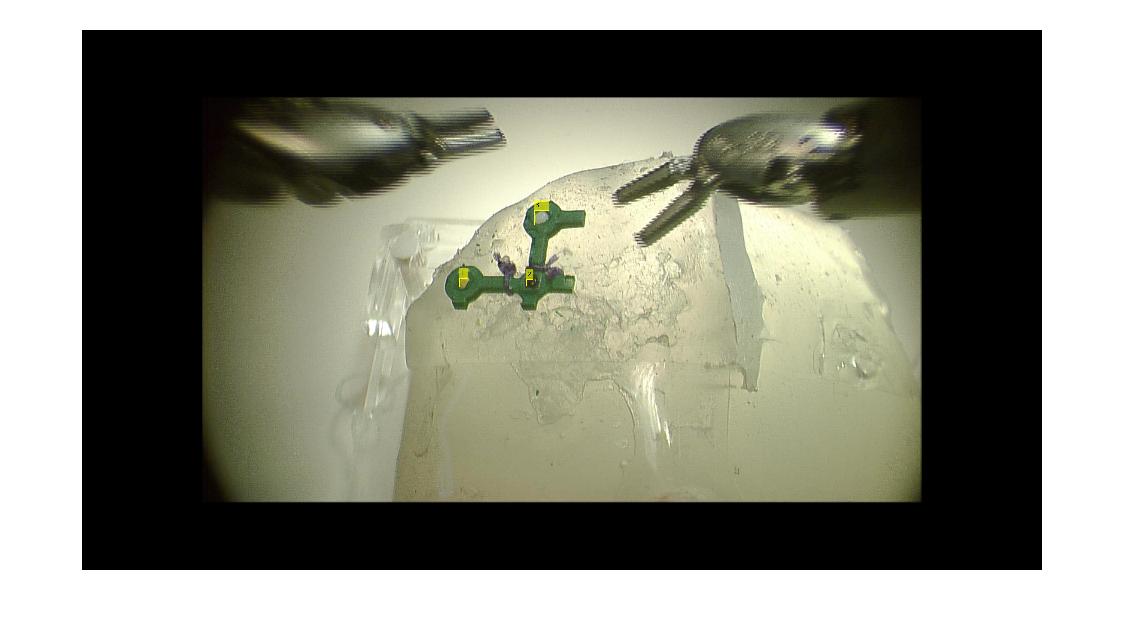
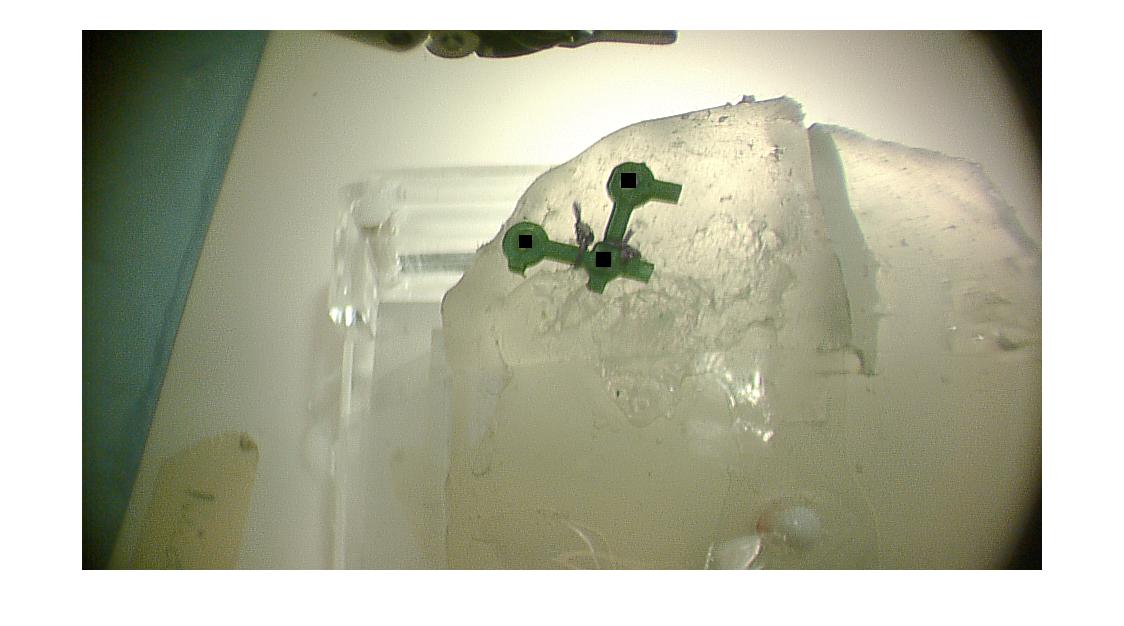
<fs larger>The green triangular frame is the fiducial frame, with three fiducials on it, each fiducial is a colored sphere with white, yellow and black color respectively </fs>
Significance
<fs large>• Project Relevance:
</fs>
<fs larger>In order to do stereo video augmentation, several coordinate transformation need to be calculated</fs>.
<fs larger>In summary: (Video𝑇CT) = (Video𝑇CBCT) (CBCT𝑇CT) . We need to find (video𝑇CBCT)</fs>.
<fs larger>Using Fiducial: (𝑃fiducial)Video = (Video𝑇CBCT) ∗ (𝑃fiducial)CBCT, and Video𝑇CBCT= (𝑃fiducial)Video *( 𝑃fiducial)CBCT )−1</fs>
<fs larger>As long as (𝑃fiducial)Video is got, the transformation between video and CBCT can be got</fs>.
<fs larger>This project is to track the fiducials and get the position of the fiducials in the stereo video which is (𝑃fiducial)Video</fs>.
<fs large>• Project Significance</fs>:
<fs larger>Current existing method to find (Video𝑇CBCT) is a manual process which is based on user input, either by the operator using 3DUI virtual cursors of MTMs, or by placing tool tips of PSMs directly onto the sphere, which would require robot-to-tooltip calibration. A non-user input method should be developed, and this is the goal for this project.</fs>
Deliverables
Technical Approach
<fs larger>The approaches to achieve the goal consist mainly of three steps:use color and edge characteristics to detect the frame which encompasses the three fiducials, use color and position characteristics to detect the fiducials, and apply Kalman filter to track the fiducials in videos. </fs>
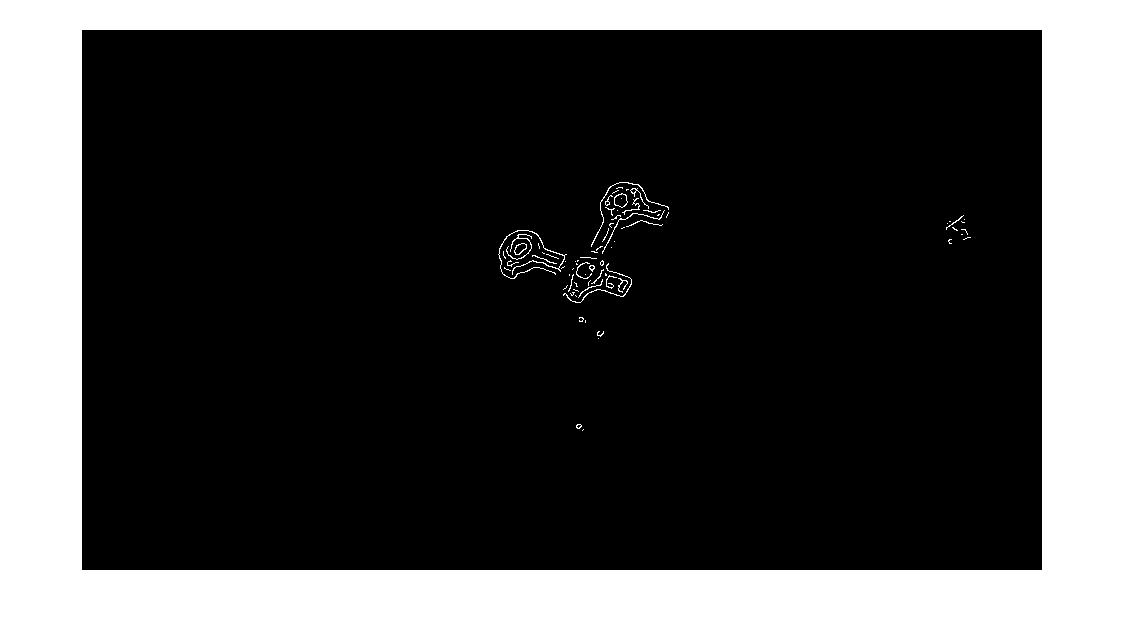
<fs larger>Use the frame contour and the color information to detect the three colored fiducials, and delete some noise points </fs>
<fs larger>Use connectivity to group pixels that might belong to a fiducial.</fs>
<fs larger>Use a weighting function to select the fiducial group from the candidate groups. The geometric center of the group is the center of detected fiducial, and the size of the group reflects the size of the fiducial. Denote the detected fiducial as black squres on the image </fs>

Apply Kalman filter for tracking, which is used to find fiducials of which the detections are missing. The tracking is based on the motion of the fiducials.
Dependencies
• <fs larger>Cisst and saw understanding (current state: still working on it, pause) </fs>
<fs larger>Solution: Read tutorials and ask Wen and Anton
</fs>
<fs larger>• Access to the robot and the system (currenet state: got it)
</fs>
<fs larger>Solution: Ask Wen and Prof. Taylor for permission </fs>
Milestones and Status
Milestone name: Complete Software Installation
Planned Date: Feb. 20
Expected Date: Feb. 20
Status: completed
Milestone name: get the new fiducial (optional)
Planned Date: March. 1
Expected Date: April.25
Status: haven't begun
Milestone name: completion of preliminary algorithm design
Planned Date: March. 7
Expected Date: March. 12
Status: completed
Milestone name: Begin algorithm implementation (coding) with C++
Planned Date: March. 10
Expected Date: March. 15
Status: Began Paused
Milestone name: (Minimum deliverable) Complete algorithm implementation on recorded images
Planned Date: April. 10
Expected Date: April. 15
Status: Completed
Milestone name: (Minimum deliverable) Complete algorithm implementation on recorded videos
Planned Date: April. 15
Expected Date: April. 17
Status: Completed
Milestone name: (Expected deliverable) Complete algorithm implementation for tracking on recorded videos
Planned Date: April. 17
Expected Date: April. 22
Status: Completed
Milestone name: (Expected deliverable) Complete algorithm implementation for Real-time fiducial tracking on recorded videos
Milestone name: (Expected deliverable) Optimization for the implementation of tracking
Milestone name: (Maxium deliverable) Optimization for the implementation of tracking under intraoperative video
Planned Date: April. 29
Expected Date: May. 3
Status: Haven't begun
Milestone name: Post session and project report
Reports and presentations
Project Plan
Project Background Reading
Project Checkpoint
Paper Seminar Presentations
Project Final Presentation
Project Final Report
Project Bibliography
Tony F. Chan and Luminita A. Vese, “Active Contours Without Edges”, IEEE TRANSACTIONS ON IMAGE PROCESSING, VOL. 10, NO. 2, FEBRUARY 2001
active_contours_without_edges.pdf Wen P. Liu et al, “Toward intraoperative image-guided transoral robotic surgery”. J Robotic Surg 2013
Wen P. Liu et al, “Intraoperative Cone Beam CT Guidance for Transoral Robotic Surgery”
Other Resources and Project Files
Here give list of other project files (e.g., source code) associated with the project. If these are online give a link to an appropriate external repository or to uploaded media files under this name space.
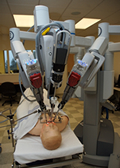 http://www.ohsu.edu/xd/health/services/comprehensive-robotics-program/surgical-services/transoral-robotic-surgery-tors.cfm
http://www.ohsu.edu/xd/health/services/comprehensive-robotics-program/surgical-services/transoral-robotic-surgery-tors.cfm
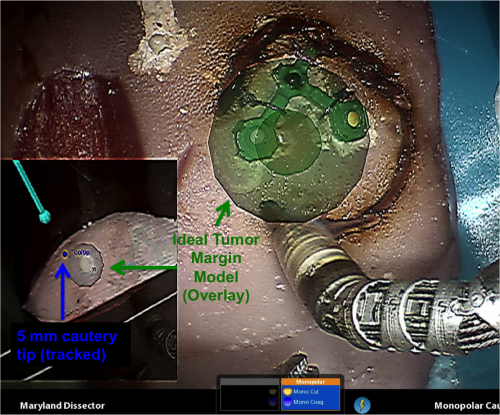 Image in courtesy of Wen P. Liu
Image in courtesy of Wen P. Liu

